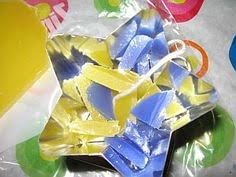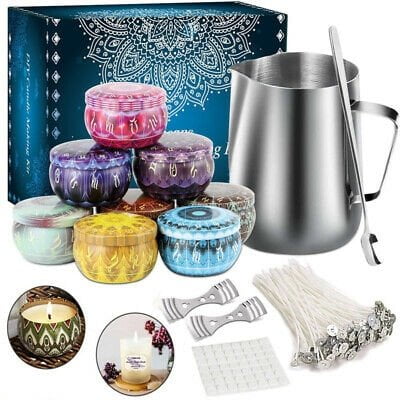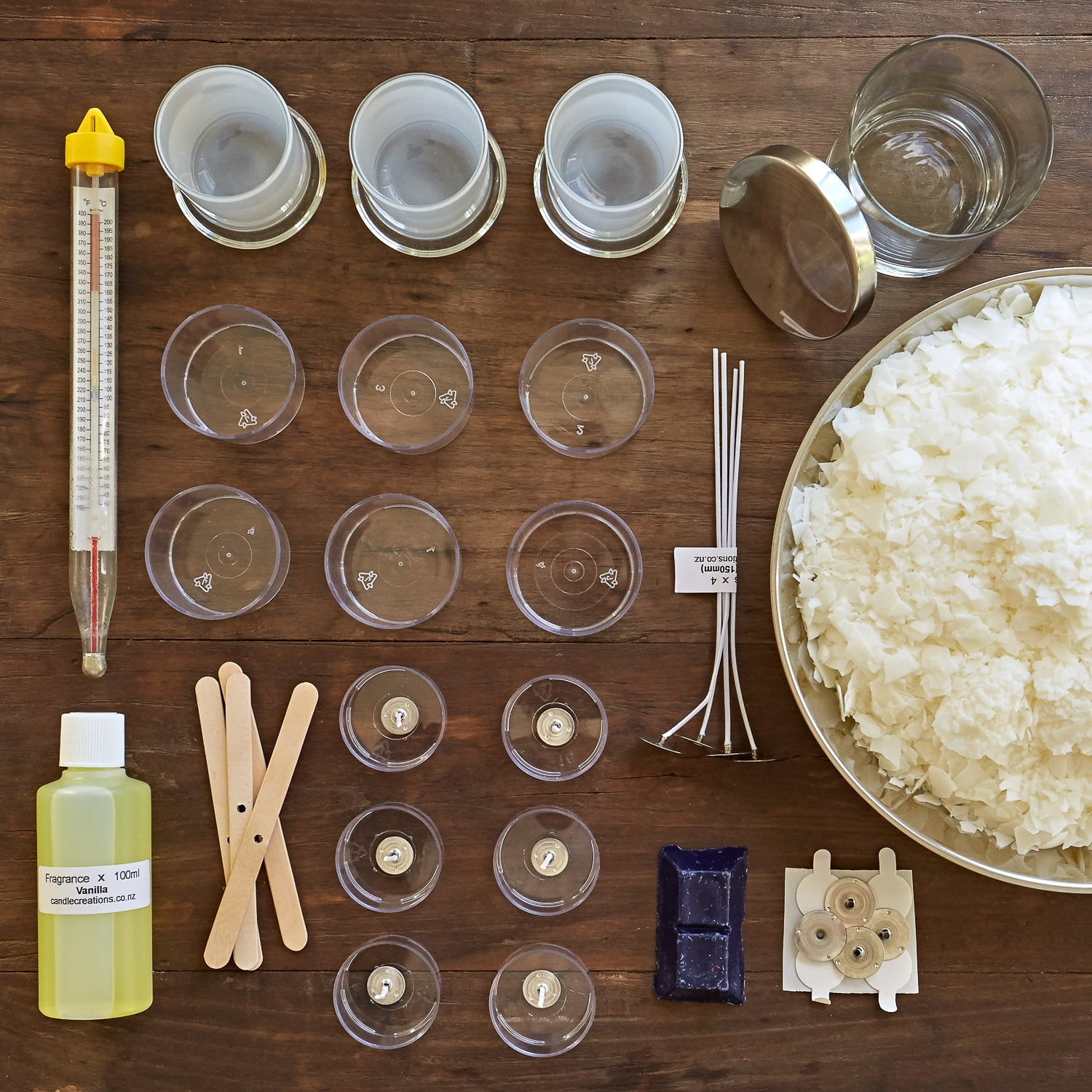Candle making is a traditional craft that has seen significant advancements in recent years, particularly in the area of automation. The design of a candle making machine plays a crucial role in both the efficiency and quality of candle production. This article delves into the various aspects of designing a candle making machine, from understanding its components to exploring innovations and future trends.
Automating the candle making process offers numerous benefits, including increased production speeds, reduced labor costs, and improved consistency in the final product. A well-designed candle making machine is essential for achieving these advantages while also minimizing potential challenges that may arise during production.
In this article, we will explore the importance of a well-designed candle making machine and provide insights into understanding its components. We will also discuss the factors to consider when designing such a machine and examine case studies of successful designs. Ultimately, we aim to highlight the impact of design on the efficiency and quality of candle making machines.
The Importance of a Well-Designed Candle Making Machine
A well-designed candle making machine is crucial for ensuring efficiency, high-quality production, and safety in the candle making process. Without a properly designed machine, the entire production line can suffer from inconsistencies, defects, and even potential hazards. The design of the machine determines how effectively it can handle raw materials, how precise it is in shaping and molding the candles, and how efficiently it can operate to meet production demands.
One important aspect of a well-designed candle making machine is its ability to maintain consistent quality across all produced candles. This includes factors such as temperature control, pressure regulation, and precision in measuring and pouring wax.
A poorly designed machine may result in variations in size, shape, or texture of the candles, which can affect customer satisfaction and brand reputation. It is also important for the machine to be easy to clean and maintain to prevent contamination or defects in future batches.
Moreover, a well-designed candle making machine should prioritize safety for workers operating the equipment. This means incorporating safety features such as emergency shut-off systems, guards on moving parts, and clear instructions for operation. By prioritizing safety in the design phase, manufacturers can ensure a safe working environment and avoid potential accidents or injuries. Overall, the importance of a well-designed candle making machine cannot be overstated as it directly impacts production efficiency, product quality, and worker safety.
Understanding the Components of a Candle Making Machine
A candle making machine consists of several components that work together to automate the process of producing candles. Understanding these components is essential for designing a highly efficient and effective candle making machine.
Wax Melting System
One of the key components of a candle making machine is the wax melting system. This system is responsible for melting the wax to the desired temperature for pouring into molds. It typically includes a heating element, a thermostat, and a reservoir for holding the wax. The design of this component must ensure uniform heating and precise temperature control to produce high-quality candles.
Molding Mechanism
Another important component of a candle making machine is the molding mechanism. This component is responsible for shaping the melted wax into candles. It may consist of molds, mold release mechanisms, and an automated pouring system. The design of this component must allow for easy and precise filling of the molds, as well as efficient release of the finished candles.
Cooling and Trimming System
Once the candles are molded, they need to cool down and be trimmed to achieve their final shape. A well-designed candle making machine includes a cooling and trimming system that automates these processes. This component may include cooling racks, trimming mechanisms, and conveyor systems for transferring the finished candles to packaging or storage areas.
Understanding the components of a candle making machine is crucial in designing a system that can streamline production, improve quality control, and increase overall efficiency in candle manufacturing processes. Each component must be carefully designed to work in harmony with others to create a seamless automation process for manufacturing candles at scale while ensuring consistent quality output.
Factors to Consider in Designing a Candle Making Machine
When it comes to designing a candle making machine, there are several important factors that need to be taken into consideration in order to ensure optimal performance and efficiency. This section will delve into some of the key factors that should be kept in mind during the design process.
Production Capacity and Speed
One of the most crucial considerations in the design of a candle making machine is its production capacity and speed. The machine should be able to produce the desired quantity of candles within a given time frame without compromising on quality. Factors such as the size and type of candles being produced, as well as market demand, will all play a role in determining the required production capacity and speed of the machine.
Flexibility and Customization
Another important factor to consider is the flexibility and customization options available with the machine. A well-designed candle making machine should have the capability to produce a variety of candle sizes, shapes, and types, allowing for flexibility in production based on consumer preferences. Being able to customize candles according to specific customer demands can also provide a competitive edge in the market.
Energy Efficiency and Sustainability
In today’s environmentally conscious world, energy efficiency and sustainability have become increasingly important considerations in machine design. When designing a candle making machine, it is essential to prioritize energy efficiency by incorporating features such as automated temperature control, reduced waste generation, and use of eco-friendly materials where possible.
Taking these factors into account during the design phase will ultimately lead to the creation of a more efficient, versatile, and sustainable candle making machine that meets both industry standards and consumer needs.
Innovations and Technological Advancements in Candle Making Machine Design
The design of a candle making machine has significantly evolved over the years, with technological advancements and innovations playing a crucial role in shaping the efficiency and quality of candle production. Here are some notable developments in candle making machine design:
- Automation: One of the most significant innovations in candle making machine design is the integration of automation. Modern machines are equipped with programmable logic controllers (PLCs) that allow for precise control of various stages of the candle making process, from wax melting to cooling and packaging.
- Energy Efficiency: With a growing emphasis on sustainability, manufacturers have been focusing on designing candle making machines that are energy-efficient. This includes the use of advanced heating systems, insulation materials, and optimized production processes to minimize energy consumption.
- Data Analytics: Another technological advancement in candle making machine design is the incorporation of data analytics tools. These tools enable real-time monitoring of production parameters, predictive maintenance, and quality control, leading to improved overall efficiency and product consistency.
These innovations have not only revolutionized the candle making industry but have also raised the bar for machine designers to continually strive for more advanced and efficient solutions.
In addition to these advancements, there has been a growing trend towards integrating smart technology into candle making machines. This includes features such as remote monitoring and control, predictive maintenance alerts, and connectivity with other production equipment. As Industry 4.0 continues to gain momentum, it is expected that future designs of candle making machines will be even more interconnected and digitally optimized.
Case Studies of Successful Candle Making Machine Designs
Successful candle making machine designs have revolutionized the candle manufacturing industry, leading to increased efficiency and higher-quality products. One such case study is the development of an automated wax melting and pouring system that has significantly improved the production process for a leading candle manufacturer. This machine is equipped with precise temperature controls and automated pouring mechanisms, resulting in consistent and high-quality candles.
Another successful case study involves the implementation of a multi-functional candle making machine that is capable of producing various types of candles, including pillar, votive, and container candles. This versatile machine has increased production flexibility and reduced the need for multiple machines, ultimately saving space and resources in the manufacturing facility.
Furthermore, a case study on the design of a fully integrated online monitoring system for a candle making machine has demonstrated significant improvements in quality control. This system provides real-time data on parameters such as wax temperature, wick placement, and cooling time, allowing for immediate adjustments to optimize candle quality.
These case studies exemplify how well-designed candle making machines can greatly impact production processes and product quality. By incorporating innovative features and advanced technology, these machines have set new standards for efficiency and precision in the candle manufacturing industry.
| Case Study | Key Features |
|---|---|
| Automated Wax Melting System | Precise temperature controls, automated pouring mechanisms |
| Multi-Functional Candle Making Machine | Versatility in producing different types of candles |
| Integrated Online Monitoring System | Real-time data on parameters for quality control |
Challenges in Designing a Candle Making Machine and How to Overcome Them
Candle making has been practiced for centuries, and while the traditional methods involve manual labor, modern advancements have paved the way for automation in the candle making industry. The design of a candle making machine plays a crucial role in improving efficiency, increasing production capacity, and ensuring product quality. However, there are various challenges that designers and manufacturers face when creating these machines.
One of the primary challenges in designing a candle making machine is ensuring the uniformity and consistency of the candles produced. This requires precise control over factors such as temperature, pressure, and cooling processes. Additionally, variations in raw materials and environmental conditions can impact the final product. To overcome this challenge, designers often incorporate advanced sensors and automation systems that continuously monitor and adjust these variables to maintain consistency in the finished candles.
Another significant challenge is the customization of candle designs. Many manufacturers offer unique candle shapes, sizes, colors, and fragrances to meet consumer demands. Designing a machine that can accommodate these customization requirements without sacrificing production efficiency can be complex. One solution to this challenge is the integration of modular components in the machine design, allowing for quick adjustments and reconfiguration to produce different candle variations.
In addition to technical challenges, designers also need to consider the safety and ergonomic aspects of the machine for operators. Ensuring proper guarding, easy access for maintenance, and compliance with safety standards are essential considerations in the design process. Overcoming these challenges often involves collaboration between engineers, material experts, and candle industry professionals to develop innovative solutions that address all these aspects of candle making machine design.
| Challenges Faced | How to Overcome Them |
|---|---|
| Uniformity and consistency | Incorporate advanced sensors and automation systems |
| Customization of designs | Integration of modular components for quick adjustments |
| Safety considerations | Collaboration between experts for innovative solutions |
Future Trends in the Design of Candle Making Machines
The future of candle making is steadily shifting towards automation and technological advancements in machine design. As the demand for candles continues to rise, manufacturers are turning to innovative solutions to improve efficiency, productivity, and quality. In this section, we will explore the potential future trends in the design of candle making machines.
One key trend in the design of candle making machines is the integration of smart technology and data analytics. Manufacturers are looking to incorporate sensors and monitoring systems into their machines to collect real-time data on production processes. This data can then be analyzed to identify patterns, optimize settings, and make informed decisions for continuous improvement. By leveraging data-driven insights, candle makers can streamline operations, reduce waste, and enhance overall production performance.
Another emerging trend is the focus on sustainability and eco-friendliness in machine design. With increasing awareness about environmental impact, there is a growing demand for sustainable practices in manufacturing. In response, designers are exploring materials and energy-efficient technologies that minimize carbon footprint and waste generation in the production of candle making machines. This includes using recycled materials, implementing energy-saving features, and adopting cleaner manufacturing processes.
Furthermore, the future of candle making machine design may see advancements in versatility and customization capabilities. Manufacturers are looking to develop machines that can accommodate a broader range of candle types, sizes, and designs. This includes flexible configurations, adjustable settings, and adaptable tooling options to cater to diverse market demands. By offering versatile solutions, machine designers can provide greater flexibility for candle makers to innovate and differentiate their products in the market.
As the industry continues to evolve, it is clear that the design of a candle making machine plays a crucial role in shaping the future of candle production. By embracing these future trends such as smart technology integration, sustainability focus, and versatility enhancement, manufacturers can stay ahead of market demands while improving overall efficiency and quality in candle making processes.
Conclusion
In conclusion, the design of a candle making machine plays a crucial role in the efficiency and quality of candle production. A well-designed machine not only automates the process but also ensures a consistent and high-quality output. Understanding the components and factors to consider in designing such a machine is essential in achieving optimal results.
Technological advancements have paved the way for innovations in the design of candle making machines, resulting in increased productivity and cost-effectiveness. Case studies of successful designs serve as inspiration for manufacturers and engineers to continuously improve and refine their machines, addressing challenges along the way.
Despite challenges in designing a candle making machine, such as ensuring safety, reliability, and ease of maintenance, overcoming these obstacles through careful planning and innovation is necessary for progress. Looking ahead, future trends in machine design are likely to focus on sustainability, energy efficiency, and customization capabilities to meet evolving consumer demands.
In essence, the impact of design on candle making machine efficiency and quality cannot be understated. By continuously striving for improvements and embracing technological advancements, manufacturers can create machines that not only streamline production but also elevate the overall candle-making industry. The future holds exciting opportunities for innovation in this field, promising even better results for both producers and consumers alike.
Frequently Asked Questions
What Do You Need to Be a Candle Maker?
To be a candle maker, you need basic supplies such as wax, wicks, fragrance oils, containers, and a heat source. Additionally, you’ll need equipment like a double boiler or wax melter, a thermometer, and stirring utensils.
Is Homemade Candle Business Profitable?
The profitability of a homemade candle business depends on various factors such as the quality of your products, pricing strategies, and target market. With the right approach and marketing efforts, it can certainly be profitable.
How Do You Make Candle Equipment?
Making candle equipment usually involves creating or sourcing items like melting pots or double boilers for melting the wax, choosing the right molds or containers for shaping the candles, and ensuring you have proper storage for all your materials. Quality equipment is essential for successfully making candles.

Welcome to my candle making blog! In this blog, I will be sharing my tips and tricks for making candles. I will also be sharing some of my favorite recipes.





